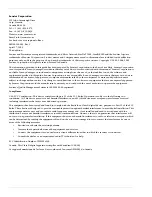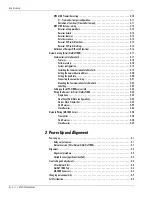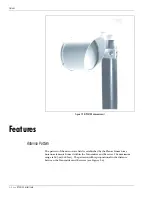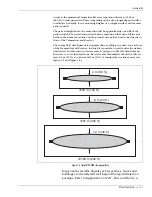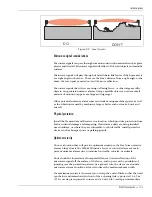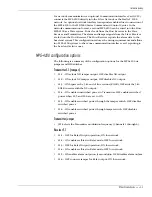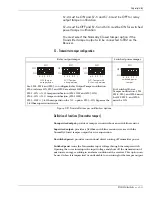
Installation planning
2 - 2 • • • MPS-4100 product guide
envelope. Refer to Do’s and Don’ts a planning primer, in
Appendix a for information about zone lengths and maximum
beam widths for microwave zones near metal objects.
Terrain
Since operation of the link requires the transmission of energy from the
Transmitter to the Receiver, you must maintain a clear line of sight between the
units. Therefore, the ground must be flat across the protected area. Any bumps,
hills or ditches must be filled or graded so that the area is level to within 15 cm
(6 in.) (see Figure 2-2).
The protected area’s surface can be any stable, reasonably smooth material such
as concrete, asphalt, soil, or gravel. If there is grass or vegetation in the protected
area, it must be kept cut to a maximum of 8 cm (3 in.) in height. An MPS-4100
should not be operated over open water, or where standing puddles will form.
For environments in which snow accumulates during the winter months, a hard
surface is recommended to facilitate snow removal.
Figure 2-1 Zone length/width relationship
30 m (100 ft.)
91 m (300 ft.)
183 m (600 ft.)
zone length
2 m (6.6 ft.)
6 m (20 ft.)
12 m (40 ft.)
approximate
beam width
microwave field
required clear area
30 m (100 ft.)
91 m (300 ft.)
183 m (600 ft.)
min. required
clear area
4 m (13 ft.)
12 m (40 ft.)
24 m (79 ft.)

